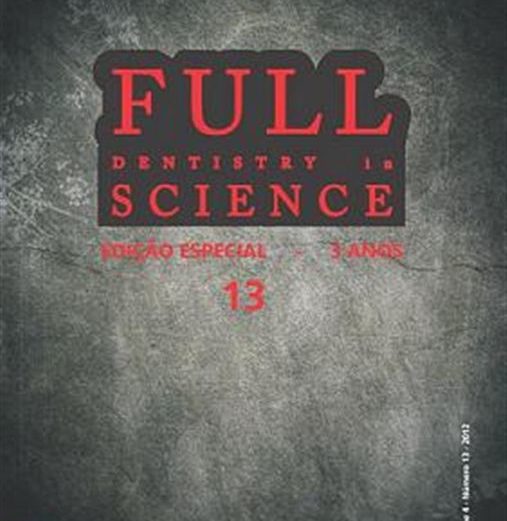CADERNO ODONTOLOGIA CLÍNICA Relato de Caso/Case report Página 150-153 Citotoxicidade in vitro de enxaguatório bucal em diferentes períodos de tempo. In vitro cytotoxicity of mouthwash in different time periods. Matheus Melo Pithon1 Gabriel Couto de Oliveira2 Ana Carolina Dias Viana de Andrade3 Rogério Lacerda dos Santos4 Fernanda Otaviano Martins5 Maria Teresa Villela Romanos6 Resumo O objetivo deste trabalho foi avaliar a citotoxicidade do enxaguatório bucal Plax Tradicional. Avaliou-se em diferentes tempos: 1, 15, 30, 45, 60 e 120 segundos quanto seu efeito citotóxico em fibroblastos gengivais L929. Utilizou-se 3 grupos controle: positivo (C+) detergente celular Tween 80, negativo (C-) PBS, e controle de célula (CC) onde as células não foram expostas a nenhum material. O ensaio de citotoxicidade foi realizado utilizando cultura celular de fibroblasto de camundongo (L929). Após contato do enxaguatório com as células, as mesmas foram colocadas em contato com o corante vital vermelho neutro utilizando-se a técnica “dye uptake”. Os valores da quantidade de células viáveis foram submetidos à análise da variância (ANOVA) para determinar se havia diferença estatística entre os grupos, e posteriormente, ao teste de Tukey (p<0.05). Os resultados demonstraram citotoxicidade do enxaguatório com diferenças estatísticas para os grupos CC e C- (p<0.05). Em relação ao controle positivo, o Plax foi mais citotóxico nos tempos 45, 60 e 120 segundos. A citotoxicidade foi diretamente proporcional ao tempo de exposição às culturas de células. Dessa forma, pode-se concluir que o enxaguatório Plax tradicional é altamente citotóxico a fibroblastos gengivais. Descritores: Citotoxicidade, enxaguatórios bucais, cultura de células. Abstract The aim of this study was to evaluate the cytotoxicity of Traditional Plax mouthwash. It was evaluated at different times: 1, 15, 30, 45, 60, and 120 seconds as their cytotoxic effect on gingival fibroblasts L929. We used three control groups: positive (C +) cell detergent Tween 80 was negative (C-), PBS, and cell control (CC) where the cells were not exposed to any material. The cytotoxicity assay was performed using cell culture of mouse fibroblast (L929). After contacting the mouthwash with the cells, they were placed in contact with the vital dye neutral red using the technique (dye uptake). The values of the amount of viable cells were subjected to analysis of variance (ANOVA) to determine whether there were statistical differences between groups, and subsequently Tukey test (p <0.05). The results showed cytotoxicity of mouthwash with statistical differences for the CC and C- (p <0.05). In relation to the positive control, Plax was more cytotoxic in the days 45, 60, and 120 seconds. Cytotoxicity was directly proportional to exposure time to cell cultures. Thus we can conclude that the traditional Plax mouthwash is highly cytotoxic to gingival fibroblasts. Descriptors: Cytotoxicity, mouthwashes, cell culture. 1 Ms. e Dr. em Ortodontia pela UFRJ, Prof. de Ortodontia – UESB. 2 Acadêmico de Odontologia da UESB. 3 Esp. em Dermatologia; Profª. Imunopatologia da UESB. 4 Ms. e Dr. em Ortodontia pela UFRJ; Prof. Ortodontia da UFCB. 5 Microbióloga graduada pela Universidade Federal do Rio de Janeiro – UFRJ. 6 Ms. e Dr. em Microbiologia pela UFRJ, Profª de Virologia da UFRJ.
This content is restricted to site members. If you are an existing user, please log in. New users may register below.




